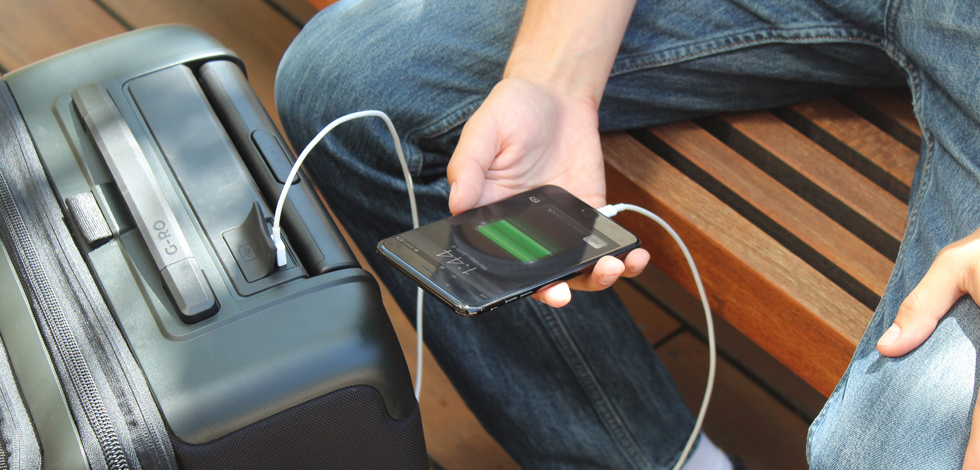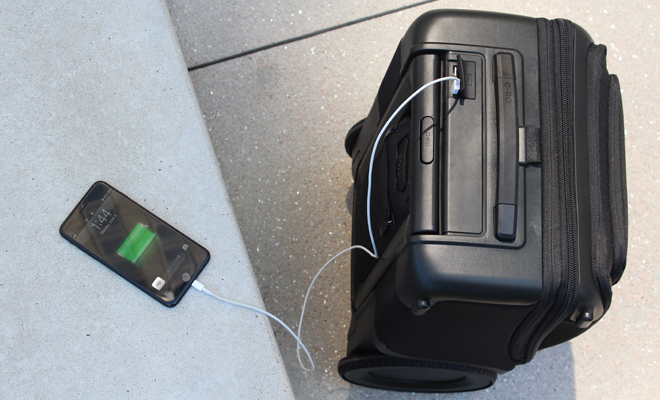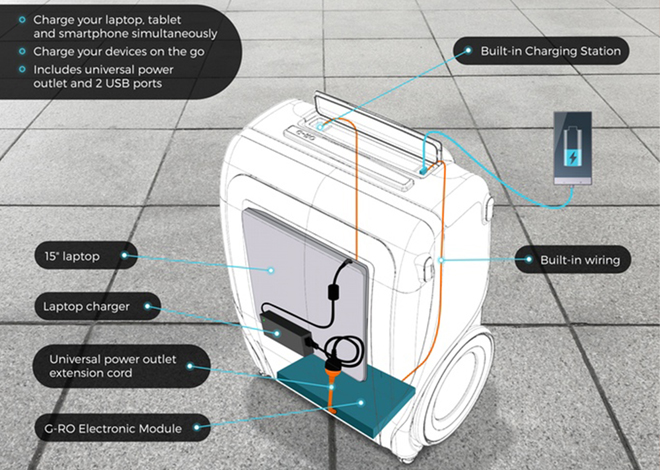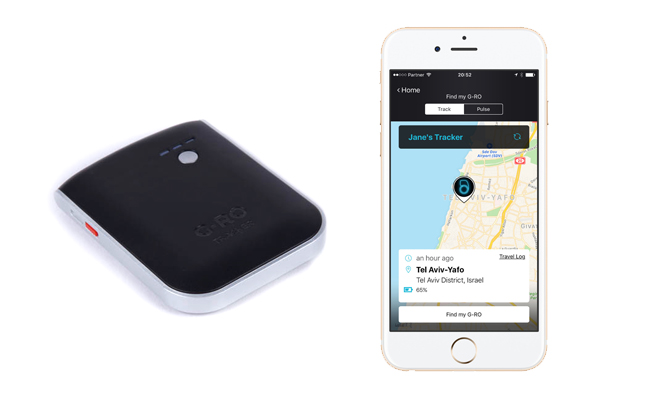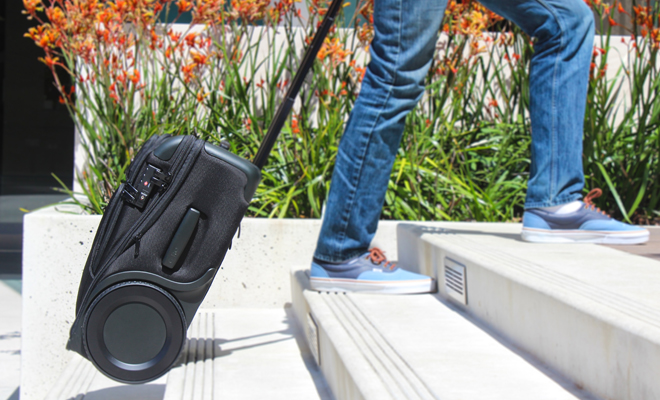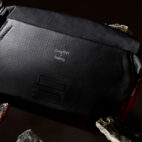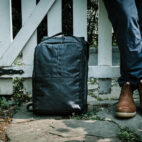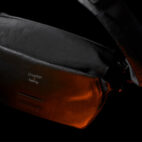Get Smarts: a Beginners Guide to Smart Luggage
Would anyone disagree if I said “travel can be stress inducing”? It’s quite the understatement, right? There’s a reason “travel tips” returns 284 million hits on Google. Everyone wants to make it a bit easier.
A lot of those suggestions are practical: pack this, roll your clothes like that, medicate yourself thusly. But pay some attention to your tools as well.
Luggage is the lynchpin of your travel experience. You use it from door to door. You should be using the best version of it possible. But, really, beyond getting lighter and easier to roll along the ground, the humble suitcase hasn’t seen much change.
That’s been changing. Smart luggage and smart accessories have been popping up recently, ready and waiting to make the epicentre of your travel better. That brings with a lot of hype and a lot of confusion. Let’s cut through some of that.
Asking the right questions
You need to know what you want when trying to decide if smart luggage is right for you. The question you need to be asking isn’t “What can this bit of luggage do?” Really, there are three things to consider:
- What value does this bit of technology add?
- What problems does it solve?
- What problems could it introduce?
Your use case will mean the answers to those vary but they’re a nice starting point for anyone. With those questions in mind, we can figure out what matters in smart luggage.
So, what’s on offer?
The tech on offer in smart luggage ranges from the basic to the slightly esoteric. Let’s go through the main things you can expect – in-built batteries, GPS, locks, scales – and some of the more fun things you can buy.
Just to be clear, though: a lot of the luggage in this space will have multiple, if not all, the things on offer here. There’s still a lot of picking and choosing to be done, however, as some companies will focus on one thing over the other.
Battery packs
Battery packs are table stakes here. If you’re looking at smart luggage, odds are every suitcase will charge your phone somehow. If it doesn’t, it’s not really in the game.
And that’s no surprise: providing a way to charge your phone is the most tangible, straightforward solution to a problem everyone understands. No one wants to be stuck on 7% battery when they’re at an airport.
Now, sure, there are countless other battery packs on the market. The benefit here is integration. Even if the pack in a smart suitcase is removable, it’ll come with some form of integration – usually in the form of a USB port near the suitcase’s handle. No need to fiddle through compartments: just plug your phone in and you’re good.
The main things to consider here are capacity – how many charges you’ll get and at what scale – and whether or not the battery pack is built into the luggage. Your options range from five phone charges in a Trunkster Carry-on or an Away to upwards of 10 phone charges in something like a G-Ro. Obviously, if you want to charge a laptop or tablet, the higher the capacity the better.
Most battery packs are built into the luggage and, as such, not simple to remove. The Away, for example, comes with a TSA screwdriver so you can dig its battery out if you need to. Others, like the G-Ro again, are easier to take out.
That adds a bit of flexibility: use it when you want to, take it out when you don’t need it (or if you’re feeling extra unsure about flight regulations and batteries).
About those regulations
Batteries are fine for most carry-on flights. You’ll be able to take your battery-equiped suitcase with you on the plane. You won’t be able to check it in, however.
And things like batteries, and the wiring they can entail, may raise a few eyebrows at airports – so make sure you’re prepared to explain yourself on the unlikely event you need to do so. Smart luggage is still a novelty and airport security officers aren’t known for being a tranquil bunch.
As of writing, rechargeable batteries are fine for carry-on. Just check your airline’s rules before you fly.
Location tracking
Worried about losing your suitcase? Worry no more: you can now track your suitcase via an app on your phone.
Some promise worldwide protection, others focus on warning you if your suitcase gets more than a few feet away from you. Some smart luggage, of course, will try and do the lot. And, yes, some of them provide alerts when your luggage reaches the carousel for pick up. You have a lot of options here – a lot of luggage makers are getting in on GPS.
Things like smart tags will do all of this as well, to lesser or greater extents. Things like Tile Mate or the Trakdot Luggage Tracker might be worth trialling if you’d like to see if this would work for you. Then there are things like the Airbolt, that provide location tracking and a smart lock.
Fancy locks
Imagine, a lock on a suitcase that you didn’t need to fiddle with like a sucker. Imagine no more: that reality is here.
Smart locks have the potential to be a great quality of life improvement, assuming they work as intended. Companies like Bluesmart are offering locks that automatically unlock once you and your phone get within X amount of feet (and lock itself if you’re outside that distance). There’s also the option of manually unlocking your bag via a smartphone app. Delsey Pluggage, meanwhile, comes with a fingerprint lock (and just about everything else you could want).
Locks are fiddly and irritating – especially on something you can be in and out of a lot like a suitcase. These locks could eliminate that pain point. But don’t forget all the things inside your bag these locks protect. They need some attention too.
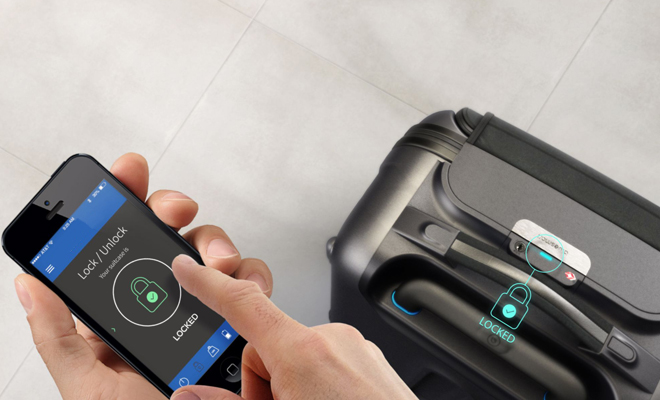
Scales
If you’ve ever worried about how heavy your bag is before boarding a flight, this one is for you: some smart luggage comes with built in scales.
Raden A22 is a nice example of this. You put everything in your bag and use the handle to weigh your bag. An app on your phone will give you a weight read out.
Miscellaneous luxuries
There are some fun other things jumping out in the smart luggage space that’ve worth a look.
Barracuda packs in a table you can extend to get some work done when you can’t find a surface (and a cup holder to boot). Modobag is motorised so you can sit on and ride it for up to eight miles.
Fugu Travel has decided that luggage needs an inflatable: if your case is too small, plug it into a wall and inflate it to get some more space. Trunkster, meanwhile, decided to do away with zippers: you use a sliding door to get at your things. Planet Traveler USA has provided a handsfree speakerphone, just in case you want to talk to your bag.
G-Ro has bet on better wheels, providing two large, axel-less wheels they argue are more durable and easier to roll around. They’ve also added a slew of clever pockets around the bag to help make some thing, like getting at your passport, a lot easier.
Packing up
There’s a fourth question to ask here. How much do you need an integrated approach to all this technology? Great pocket layouts and better wheels aside, you can get a lot of what these cases are offering in other ways.
If the luggage you have now is in good shape and you have a battery pack, how much extra value does a new suitcase with an integrated battery pack add? Will you use a built-in scale enough to justify always having it in your bag?
It’s cool tech, sure. But is it so useful it trumps the less cool alternatives (like weighing your case at home or at the airport)? Do you want another battery level to check before and during your trip? These features need power, after all. That’s on you to decide.
A lot of the benefits of smart luggage rely on a certain usage rate. Need to charge a device a lot or you’re going to pick up a lot of souvenirs during your trip? Having batteries or scales built into your luggage will add a lot of value.
That becomes even more important when you consider you’re giving up space and adding on weight for all of this tech. Both a precious commodity when you’re travelling.
Features that make your luggage that much easier to use – be that via better wheels, better space management, major levels of customisation, of anything else – are much easier sells. They can smooth out some of the wrinkles caused by luggage.
Of course, none of this matters if you just want something cool, fun and interesting. There’s something to be said for embracing the future as it’s arriving – if you want the cutting edge of anything, luggage included, then stop reading this right now and go buy yourself something nice.
You could be riding around your house on a Modobag right now (and you could order a Travelmate to follow you around while you’re do so). That is just plain cool. And, really, that’s okay.
One important thing to remember: no amount of smart luggage will replace a smart traveller. Know what you need, what you want, and where you’re going. If you’re clear about that, smart luggage will make travelling all the easier. If you’re not, you may as well be carrying a bindle for all the good scales and batteries will do.
*Update December 2017: Travelers should take note that from 15 January 2018 some US airlines will require smart luggage to have a removable battery that can be kept in the passenger cabin if the luggage needs to be checked. Find out more here.
This is a sponsored post presented by our friends at G-RO.





 Carry Awards
Carry Awards Insights
Insights Liking
Liking Projects
Projects Interviews
Interviews
